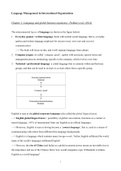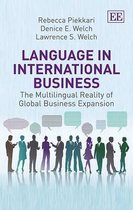Summary
Language Management in International Organizations: Summary IBC
- Course
- Institution
- Book
Grade: 7,7. This is a clear summary for the course LMiIO, used in the second year of IBC at Radboud University. It includes all 15 articles, all relevant book chapters by Piekkari et al., and everything from the lecture(s) (slides). I have read and summarized every single article / chapter, so ever...
[Show more]





